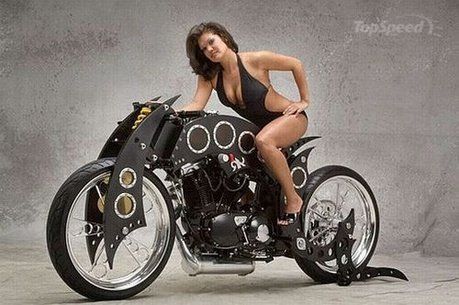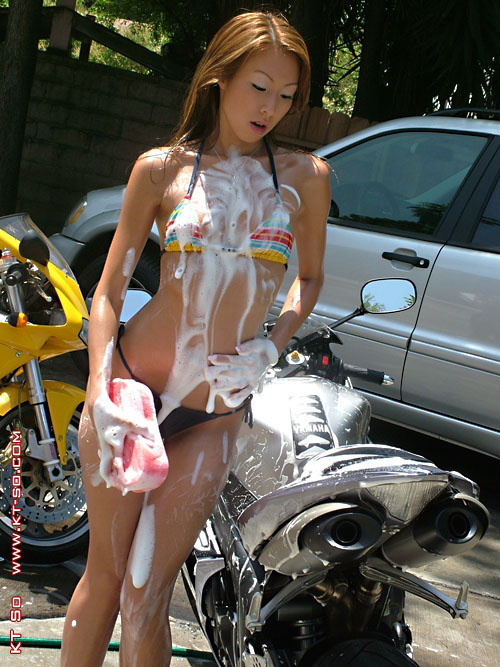
The sports of Speedway and American Flat-Track racing (mile and half-mile Grand Nationals) owe a debt to Australian promoters who developed the form in the 1920's. The Australians invented the broadsliding style of racing, on 'borrowed' dirt horse tracks, where the rear wheel is allowed to slide out on corners - this makes for spectacular
 viewing, as the riders struggle to
viewing, as the riders struggle to control the machines
control the machines solely by use of throttle and lean angle, as the rear wheel kicks up a rooster tail of dirt.
solely by use of throttle and lean angle, as the rear wheel kicks up a rooster tail of dirt.On December 15, 1923, 'Roaring' Johnnie Hoskins brought the first dirt-track race to the Hunter River Agricultural and Horticultural Society's mid-summer (for Australia) Electric Light Carnival. Says Hoskins, "The competitors stripped down their precious models. Off came mudguards and lamps and they were ready to go. One or two riders had helmets which would have sent today's referees into a fit. Most had none. Gloves were considered superfluous. They just trook off their coats, rolled up their sleeves and wheeled their assorted racing jobs on to the track." This seminal event exploded the sport into the public eye, and huge crowds attended these first meetings in Australia. Rules began to develop, the bikes shed their 'inside' footrest as they kept digging into the dirt at inopportune moments, protective gear was mandated. The day Charlie Spinks flung his motorcycle through the paltry chain link fence 'protecting' the crowd was the beginning of proper wooden crowd protection.
The first race in England was held on May 7, 1927, at Camberley, Surrey. Motor Cycling billed it as 'the first British Dirt Track Meeting." Fay Taylour won the unlimited class final. Women wouldn't be banned from racing until 1930.

The motorcycles had no brakes, and usually no gearbox, just a single speed countershaft and a clutch (although the earliest racers had no clutch and 'paced' each other around the track to arrive at the starting line together, for a rolling start).
The Australians had found that the Douglas racing machines (the RA and TT models) were ideal for sliding, as they had a very low center of gravity due to their boxer engine laid flat on
 the frame.
the frame.The Douglas factory was quick to capitalize on the craze, and developed the legendary DT model (Dirt Track, of course), which was available in 500cc and 600cc variants (DT5 and 6). In the second photo, Fay Taylour is straddling a DT5 at a track in New Zealand (see my post on her), where she had come from England on a demonstration tour of NZ and Australia (and kicked butt, apparently). There were several competitive women on the dirt track circuit in the 20's
Douglas' predominance on the sport lasted only 3 years, when Rudge and JAP-engined machines with much more compact frames were
 developed. By 1928, most manufacturers offered a 'dirt track' model, including Norton, Sunbeam, Panther, and Velocette.
developed. By 1928, most manufacturers offered a 'dirt track' model, including Norton, Sunbeam, Panther, and Velocette.The Harley Davidson 'peashooter' (pic 4), while effective on American tracks, didn't prove so useful while sliding, nor did most of the competition, but the Rudge and JAP machines came to the fore, and
 the JAP speedway bike was eventually the 'must have' machine until the 1960's, when JAWA and Weslake engined racers were developed.
the JAP speedway bike was eventually the 'must have' machine until the 1960's, when JAWA and Weslake engined racers were developed.In the States, our oval track dirt sports, called Flat-Track racing, took a more serious and powerful form, as our tracks were much longer then the usual European oval, and their engine capaicty was limited to 500cc. Our racers eventually settled on 750cc (45 cubic inch) as the engine size, and Harley and Indian side-valvve v-twins vied for top honors - machines from across the pond didn't make serious inroads until the 1950's and 60's, when Norton, Triumph, Velocette, and Matchless flat-trackers began to win races. Harley finally brought out their ohv XR750, which is truly an amazing motorcycle, and which held the top shelf of flat-tracking for many years (but that's another post).
Photos; 1. Dirt track rider protected from flying cinders. 2. AJS K10 500cc with chain-driving ohc makes for an unusual DT bike. 3. Rudge four-valve 500cc machine in New Zealand, where silencers were compulsory 4. Harley Peashooter, rated at 30:50 cu.i. (500cc), also in NZ. 5. Fay Taylour on her DT5 Douggie, with 500cc ohv flat-twin engine 6. Sunbeam DT90 - this machine is for sale currently 7. Norton ES2-engined bike in NZ. 8. Rudge catalog photo, ca 1929 9. Velocette KDT - a variant of the KSS - overbored to 410cc, with an alcohol piston 10. Ooops! Rudge engine in what looks like a Cotton frame.










No comments:
Post a Comment